
The Timeless Charm of Champs-Élysées
Discover the timeless charm of Champs-Élysées in Paris, where history, luxury shopping, and cultural landmarks create an unforgettable experience.
The Champs-Élysées, often hailed as 'the most beautiful avenue in the world,' is a must-visit destination in Paris, France. Stretching from the Arc de Triomphe to Place de la Concorde, this iconic boulevard is a dazzling blend of history, luxury, and Parisian allure. Stroll along the tree-lined avenue, where you'll find a mix of high-end shops, charming cafes, and historic theaters. The area is perfect for a leisurely walk, allowing you to soak in the grandeur of its architecture and the vibrant atmosphere. Don't miss the chance to explore the nearby Jardins des Champs-Élysées, a haven of green spaces and sculptures that offer a peaceful retreat from the bustling avenue. Champs-Élysées is not just about shopping and dining. It is also a cultural hub with landmarks like the Grand Palais and Petit Palais, which house impressive art exhibitions. The avenue comes alive during major events like Bastille Day and the annual Tour de France, making it a dynamic destination all year round.
Local tips in Champs-Élysées
- Visit early in the morning to avoid the crowds and enjoy a peaceful walk.
- Explore side streets for hidden gems and unique boutiques.
- Take a break at a sidewalk cafe to people-watch and soak in the Parisian vibe.
- Check out the seasonal events and exhibitions at Grand Palais and Petit Palais.
- Use the Metro for easy access; stations like Franklin D. Roosevelt and Charles de Gaulle – Étoile are conveniently located.
The Timeless Charm of Champs-Élysées
The Champs-Élysées, often hailed as 'the most beautiful avenue in the world,' is a must-visit destination in Paris, France. Stretching from the Arc de Triomphe to Place de la Concorde, this iconic boulevard is a dazzling blend of history, luxury, and Parisian allure. Stroll along the tree-lined avenue, where you'll find a mix of high-end shops, charming cafes, and historic theaters. The area is perfect for a leisurely walk, allowing you to soak in the grandeur of its architecture and the vibrant atmosphere. Don't miss the chance to explore the nearby Jardins des Champs-Élysées, a haven of green spaces and sculptures that offer a peaceful retreat from the bustling avenue. Champs-Élysées is not just about shopping and dining. It is also a cultural hub with landmarks like the Grand Palais and Petit Palais, which house impressive art exhibitions. The avenue comes alive during major events like Bastille Day and the annual Tour de France, making it a dynamic destination all year round.
Iconic landmarks you can’t miss
Jardin des Champs-Élysées
Discover the serene beauty of Jardin des Champs-Élysées, a lush garden oasis on the iconic Champs-Élysées, perfect for relaxation and exploration.
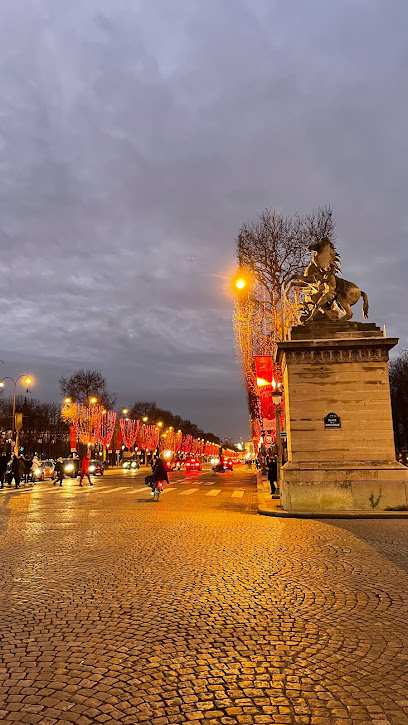
Statue du Général Charles de Gaulle
Discover the legacy of General Charles de Gaulle at this iconic Parisian monument, a tribute to resilience and French history in the heart of the city.

Winston Churchill Statue
Discover the Winston Churchill Statue in Paris, a captivating historical landmark set in a serene park, celebrating a legacy of leadership and resilience.

Equestrian Statue of Simón Bolívar
Explore the Equestrian Statue of Simón Bolívar in Paris, a stunning historical landmark celebrating freedom and artistry in the heart of the city.

Fontaine de Diane
Discover the serene beauty of Fontaine de Diane, a historic fountain in Paris, surrounded by lush gardens and rich artistic heritage.

Fontaine du Cirque
Explore the beauty and history of Fontaine du Cirque, a stunning fountain on the Champs-Élysées that captures the essence of Parisian elegance and artistry.

Monument à Jean Moulin
Explore the Monument à Jean Moulin in Paris, a powerful tribute to resistance and a celebration of French heritage amidst the vibrant city life.

Bouroullec Fountains
Discover the Bouroullec Fountains on the Champs-Élysées, where modern design meets tranquility in the heart of Paris.

Thomas Jefferson residence: 1785-1789
Visit the Hôtel de Langeac, a historic landmark in Paris where Thomas Jefferson resided, and embrace the rich Franco-American heritage.

Kiosque des Champs-Élysées
Discover the Kiosque des Champs-Élysées, a historical landmark where Parisian charm meets cultural heritage on the iconic Champs-Élysées.

Unmissable attractions to see
Arc de Triomphe
Explore the Arc de Triomphe, a majestic monument in Paris that honors France's military history and offers stunning city views.

Tuileries Garden
Discover the beauty of Tuileries Garden, a historic Parisian park with stunning landscapes and serene spaces right in the heart of the city.

Place de la Concorde
Explore the iconic Place de la Concorde, a historical plaza in Paris featuring stunning architecture, fountains, and breathtaking views of the city's landmarks.
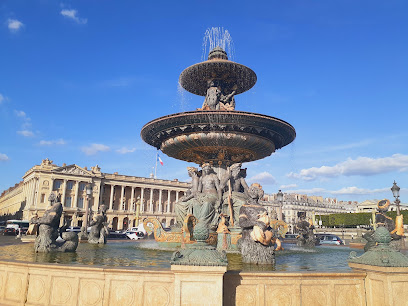
Grand Palais
Discover the Grand Palais, a stunning museum in Paris showcasing art and architecture under a majestic glass dome, a must-see for every tourist.

Petit Palais
Explore the Petit Palais, a stunning art museum in Paris showcasing an exquisite collection of renowned artworks and serene gardens.

Palais de la Découverte
Uncover the joys of science at the Palais de la Découverte in Paris - a must-visit for curious minds and families alike.

Jardin des Champs-Élysées
Explore the enchanting Jardin des Champs-Élysées, a serene garden in the heart of Paris, perfect for relaxation and scenic strolls.
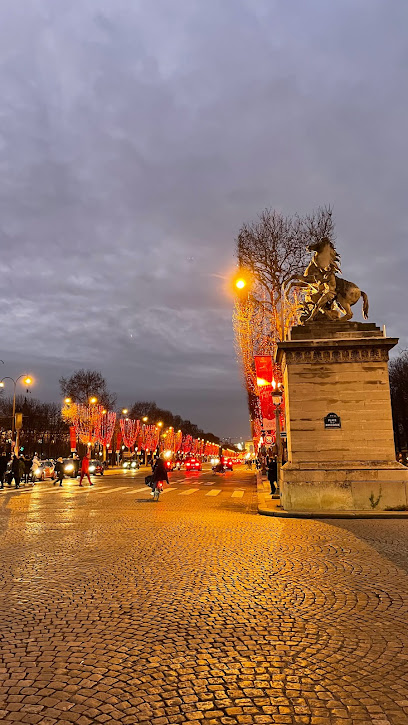
Bouroullec Fountains
Discover the Bouroullec Fountains on the Champs-Élysées, where modern artistry meets serene tranquility in the heart of Paris.

Les bateaux Parisiens
Discover Paris from a unique perspective with Les Bateaux Parisiens, a scenic cruise along the iconic Seine River showcasing the city's most famous landmarks.

Bust of Abraham Lincoln
Discover the Bust of Abraham Lincoln in Paris, a stunning tribute to freedom and friendship between nations, rich in history and artistry.
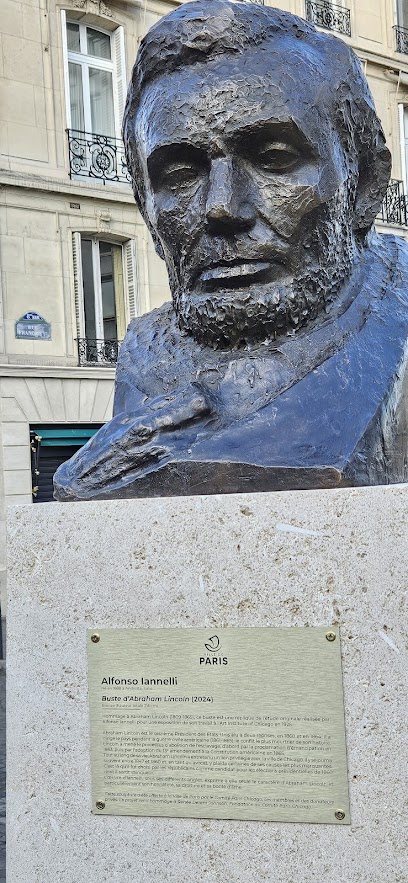
Essential places to dine
L’Alsace
Experience authentic Alsatian cuisine at L'Alsace on the Champs-Élysées—where every meal tells a story.

Flora Danica
Discover Flora Danica: A Danish culinary haven in Paris offering exquisite dishes and a vibrant atmosphere on the famed Champs-Élysées.
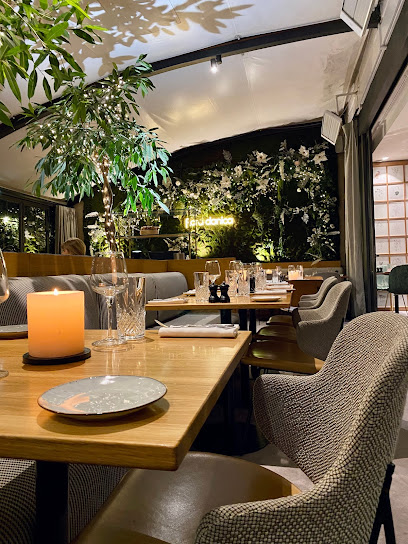
Restaurant LE Drugstore
Experience exquisite haute French cuisine and vibrant cocktails at Restaurant LE Drugstore on the iconic Champs-Élysées.

L'Atelier de Joël Robuchon Étoile - Champs-Élysées
Experience unparalleled French fine dining at L'Atelier de Joël Robuchon Étoile on Champs-Élysées - where culinary art meets luxury.

Le Cinq
Experience unparalleled fine dining at Le Cinq in Paris - where exquisite French cuisine meets luxurious ambiance.

Le Sens Unique
Experience authentic French cuisine at Le Sens Unique in Paris - where tradition meets innovation in every delicious bite.

Mun
Discover the elegance of fine Asian dining at Mun on Champs-Élysées – where culinary artistry meets luxurious ambiance.

Le Maxan
Experience exquisite haute cuisine at Le Maxan, where traditional French flavors meet modern culinary artistry in an elegant Parisian setting.

Restaurant Bus Toqué Paris
Discover culinary artistry at Restaurant Bus Toqué on the Champs-Élysées, where Haute French cuisine meets elegant dining in the heart of Paris.

L'Orangerie
Experience culinary excellence at L'Orangerie, Paris' premier fine dining destination offering exquisite French and seafood cuisine.

Markets, malls and hidden boutiques
Galeries Lafayette Champs-Élysées
Discover luxury shopping and gourmet dining at Galeries Lafayette Champs-Élysées, an iconic Parisian department store with breathtaking architecture.

Louis Vuitton
Discover the pinnacle of luxury shopping at Louis Vuitton on the famed Champs-Élysées, a true icon of Parisian elegance.

Stranger Things Store : La Boutique Officielle
Explore the Official Stranger Things Store on Champs-Élysées, a fan's paradise featuring exclusive merchandise, collectibles, and themed experiences from the hit series.

Hugo Boss
Explore Hugo Boss on the Champs-Élysées for exquisite fashion, accessories, and fragrances in the heart of Paris, blending luxury with iconic style.
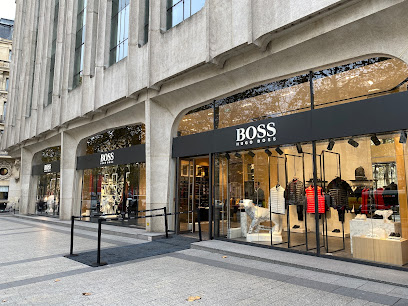
Boutiques Publicisdrugstore
Explore the charm of Boutiques Publicisdrugstore on the Champs-Élysées, where luxury meets unique finds, from gifts to gourmet delights.

Longchamp
Discover the elegance of Longchamp on the Champs-Élysées, where luxury leather goods meet Parisian sophistication.

Maje - Paris 08 - Champs-Elysées
Explore Maje on the Champs-Élysées for a unique selection of women's fashion, bags, shoes, and accessories that embody Parisian elegance.

Garella Gallery Champs Élysées
Discover the essence of Parisian fashion at Garella Gallery on the iconic Champs Élysées, where style meets elegance in a curated shopping experience.

ÉLYSÉE PARIS
Discover the essence of Parisian fashion at Élysée Paris, where contemporary style meets timeless elegance on the iconic Champs-Élysées.

Off White
Discover Off White on the Champs-Élysées, where modern streetwear meets high fashion in the heart of Paris.

Essential bars & hidden hideouts
Restaurant LE Drugstore
Experience the fusion of haute French cuisine and vibrant cocktails at Restaurant LE Drugstore on the iconic Champs-Élysées.

Bistro 25
Experience the vibrant flavors of modern French cuisine at Bistro 25, located on the iconic Champs-Élysées in Paris.

Le Sens Unique
Discover the heart of French cuisine at Le Sens Unique, a charming bistro in Paris offering traditional dishes in a warm, inviting atmosphere.
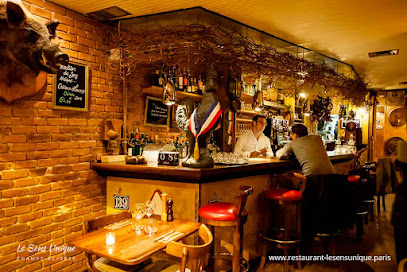
Restaurant Bus Toqué Paris
Experience the elegance of haute French cuisine at Restaurant Bus Toqué, situated on the iconic Champs-Élysées in Paris.

Cottage Elysée
Discover the charm of Cottage Elysée, a vibrant pub in Paris offering delightful drinks and a lively atmosphere in the heart of the city.

Le Bar
Experience the elegance of Le Bar at Hôtel Plaza Athénée, where exquisite cocktails and a sophisticated ambiance meet in the heart of Paris.

Le Marta Paris
Experience the vibrant nightlife of Paris at Le Marta, where exquisite cocktails and electrifying beats create unforgettable moments.

Bar de L'Escadrille
Discover the elegance of Bar de L'Escadrille, a premier bar and coffee shop on the Champs-Élysées, perfect for relaxation and socializing in Paris.
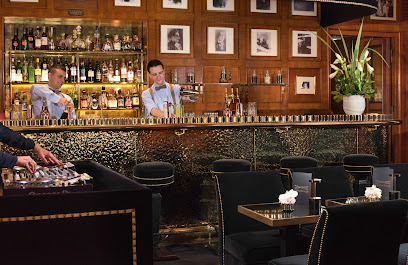
MAISON COCKTAIL
Experience the finest cocktails in Paris at Maison Cocktail, where mixology meets elegance in a stylish bar setting.

Blind Bar
Unveil the secrets of taste and sound at Paris's Blind Bar, where every sip is a sensory adventure in a captivating ambiance.
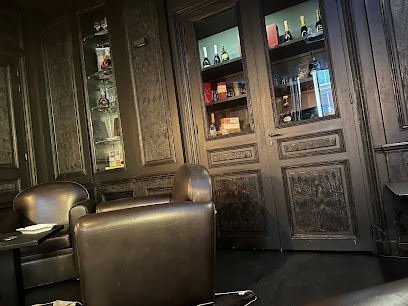
Local Phrases
-
- HelloBonjour
[bon-zhoor] - GoodbyeAu revoir
[oh ruh-vwahr] - YesOui
[wee] - NoNon
[noh] - Please/You're welcomeS'il vous plaît / De rien
[seel voo pleh / deh ryen] - Thank youMerci
[mehr-see] - Excuse me/SorryExcusez-moi / Désolé
[ex-kew-zay mwah / day-zo-lay] - How are you?Comment ça va ?
[kom-mohn sah vah] - Fine. And you?Bien. Et vous ?
[byen. ay voo] - Do you speak English?Parlez-vous anglais ?
[par-lay voo ahn-glay] - I don't understandJe ne comprends pas
[zhuh nuh kohm-prahnd pah]
- HelloBonjour
-
- I'd like to see the menu, pleaseJe voudrais voir le menu, s'il vous plaît
[zhuh voo-dray vwar luh muh-nu, seel voo pleh] - I don't eat meatJe ne mange pas de viande
[zhuh nuh mahnj pah duh vyand] - Cheers!Santé !
[sahn-tay] - I would like to pay, pleaseJe voudrais payer, s'il vous plaît
[zhuh voo-dray pay-ay, seel voo pleh]
- I'd like to see the menu, pleaseJe voudrais voir le menu, s'il vous plaît
-
- Help!Au secours !
[oh suh-coor] - Go away!Allez-vous en !
[ah-lay voo ahn] - Call the Police!Appelez la police !
[ah-peh-lay lah po-lees] - Call a doctor!Appelez un médecin !
[ah-peh-lay uh mayd-sahn] - I'm lostJe suis perdu
[zhuh swee pair-doo] - I'm illJe suis malade
[zhuh swee mah-lahd]
- Help!Au secours !
-
- I'd like to buy...Je voudrais acheter...
[zhuh voo-dray ash-tay...] - I'm just lookingJe regarde juste
[zhuh ruh-gard zhust] - How much is it?Combien ça coûte ?
[kohm-byen sah koot] - That's too expensiveC'est trop cher
[say troh shair] - Can you lower the price?Pouvez-vous baisser le prix ?
[poo-veh voo bay-say luh pree]
- I'd like to buy...Je voudrais acheter...
-
- What time is it?Quelle heure est-il ?
[kell er ay-teel] - It's one o'clockIl est une heure
[eel ay oon er] - Half past (10)Dix et demi
[dees ay duh-mee] - MorningMatin
[ma-tan] - AfternoonAprès-midi
[ah-pray mee-dee] - EveningSoir
[swahr] - YesterdayHier
[yair] - TodayAujourd'hui
[oh-zhoor-dwee] - TomorrowDemain
[duh-man] - 1Un
[uh] - 2Deux
[duh] - 3Trois
[trwah] - 4Quatre
[kat] - 5Cinq
[sank] - 6Six
[sees] - 7Sept
[set] - 8Huit
[wheat] - 9Neuf
[nuf] - 10Dix
[dees]
- What time is it?Quelle heure est-il ?
-
- Where's a/the...?Où est le/la... ?
[oo ay luh/lah] - What's the address?Quelle est l'adresse ?
[kell ay lah-dress] - Can you show me (on the map)?Pouvez-vous me montrer (sur la carte) ?
[poo-veh voo meh mohn-tray (surr lah kart)] - When's the next (bus)?Quand est le prochain (bus) ?
[kahn ay luh proh-shahn (bus)] - A ticket (to ....)Un billet (pour ....)
[uhn bee-yay (poor)]
- Where's a/the...?Où est le/la... ?
History of Champs-Élysées
-
The Champs-Élysées, meaning 'Elysian Fields,' derives its name from the Greek mythology's paradise. Originally a marshland, the area began to develop in the 17th century when it was transformed into an avenue lined with trees and gardens, designed by architect André Le Nôtre, who was also responsible for the gardens of the Palace of Versailles.
-
In the 18th century, the Champs-Élysées became a popular promenade for Parisians and visitors alike. The area flourished with cafés, theaters, and luxury shops, reflecting the vibrant culture of pre-Revolutionary France. This period marked the Champs-Élysées as a social and cultural center where the bourgeoisie gathered for leisure and entertainment.
-
Commissioned by Napoleon Bonaparte in 1806 after his victory at Austerlitz, the Arc de Triomphe became a symbol of national pride. Situated at the western end of the Champs-Élysées, it honors those who fought and died for France in the French Revolutionary and Napoleonic Wars. The monument is intricately decorated with sculptures and inscriptions honoring military leaders and battles.
-
The 19th century saw significant changes to the Champs-Élysées with the construction of grand buildings, theaters, and monuments. In 1852, Baron Haussmann's urban planning efforts transformed Paris, enhancing the avenue's beauty and accessibility. The Champs-Élysées became synonymous with luxury and modernity, attracting high-end retailers and cultural venues.
-
Both World Wars had a profound impact on the Champs-Élysées. During World War I, it served as a site for military parades and memorials, reinforcing its status as a national symbol. In World War II, the avenue was occupied by German forces, and the public was denied access. After the liberation of Paris in 1944, the Champs-Élysées became a site of celebration and national pride.
-
Entering the 21st century, the Champs-Élysées remains a central artery of French culture and commerce. It hosts major events such as the annual Bastille Day military parade and the finish line of the Tour de France. The avenue is a vibrant mix of historic landmarks, luxury boutiques, and cultural institutions, continuing to attract millions of visitors from around the world each year.
Champs-Élysées Essentials
-
Champs-Élysées is easily accessible from various neighborhoods in Paris. The nearest metro stations are Charles de Gaulle-Étoile (Line 1, 2, and 6) at the western end, and Franklin D. Roosevelt (Line 1 and 9) in the middle. Bus lines 42, 73, and 92 also serve the area. From Gare Saint-Lazare, you can take Line 3 or Line 9 to reach the Champs-Élysées quickly. For visitors arriving from Charles de Gaulle Airport, the RER B train followed by a transfer to Line 1 at Châtelet will take you to the famous avenue.
-
Champs-Élysées is best navigated on foot, allowing you to fully appreciate its sights and atmosphere. The avenue is approximately 2 kilometers long, stretching from Place de la Concorde to the Arc de Triomphe. Public transport options include the metro and buses, with several stops along the avenue. Bicycles can be rented through the city's Vélib' bike-sharing program, with docking stations located along the Champs-Élysées. Taxis and rideshare services are also readily available.
-
Champs-Élysées is generally safe for tourists, but as a high-traffic area, it can attract petty crime, especially pickpocketing. Areas to be cautious of include crowded spots near popular attractions and shopping areas. Avoid walking alone late at night, and keep your belongings secure. Always remain vigilant in crowded places, particularly near cafés and shops.
-
In case of emergency, dial 112 for immediate assistance in France. The local police station can be found near the Arc de Triomphe, and hospitals are accessible in the surrounding areas. It is advisable to have travel insurance that covers medical emergencies. Pharmacies are widely available along the Champs-Élysées for minor health issues.
-
Fashion: Do dress stylishly, as Parisians take pride in their appearance. Avoid overly casual attire. Religion: Do be respectful when near religious sites, such as the nearby Église de la Madeleine. Public Transport: Do validate your metro ticket before boarding. Don't eat or drink on public transport. Greetings: Do greet people with a polite 'Bonjour' when entering shops or restaurants. Eating & Drinking: Do try local cafés and brasseries, but don’t rush the dining experience, as meals are often leisurely.
-
To experience Champs-Élysées like a local, take time to explore the smaller side streets that branch off the main avenue, where you’ll find charming boutiques and cafés. Visit the nearby Parc Monceau for a peaceful escape from the hustle and bustle. For an authentic dining experience, try the local bistros rather than the tourist-focused restaurants directly on the Champs-Élysées. Attend a show at the Théâtre des Champs-Élysées for a taste of Parisian culture.
Trending Landmarks in Champs-Élysées
Nearby Cities to Champs-Élysées
-
Things To Do in Versailles
-
Things To Do in Rouen
-
Things To Do in Amiens
-
Things To Do in Reims
-
Things To Do in Caen
-
Things To Do in Tours
-
Things To Do in Lille
-
Things To Do in Tournai
-
Things To Do in Mons
-
Things To Do in Ypres
-
Things To Do in Kortrijk
-
Things To Do in Dinant
-
Things To Do in Nieuwpoort
-
Things To Do in Namur
-
Things To Do in Louvain-la-Neuve













